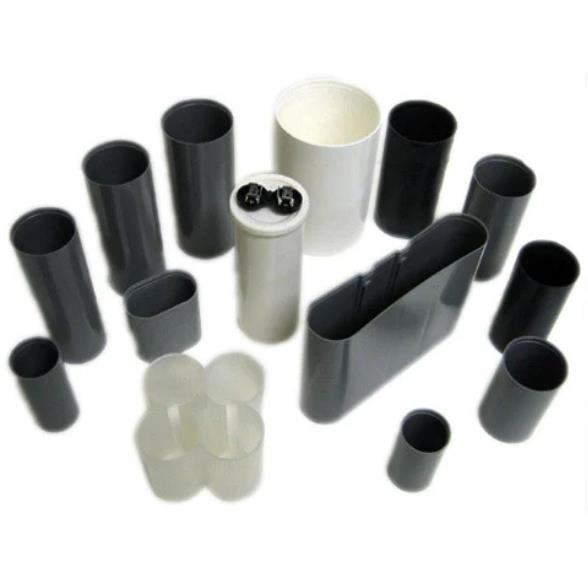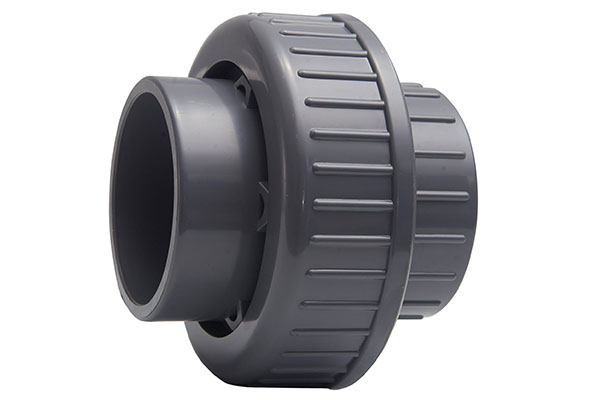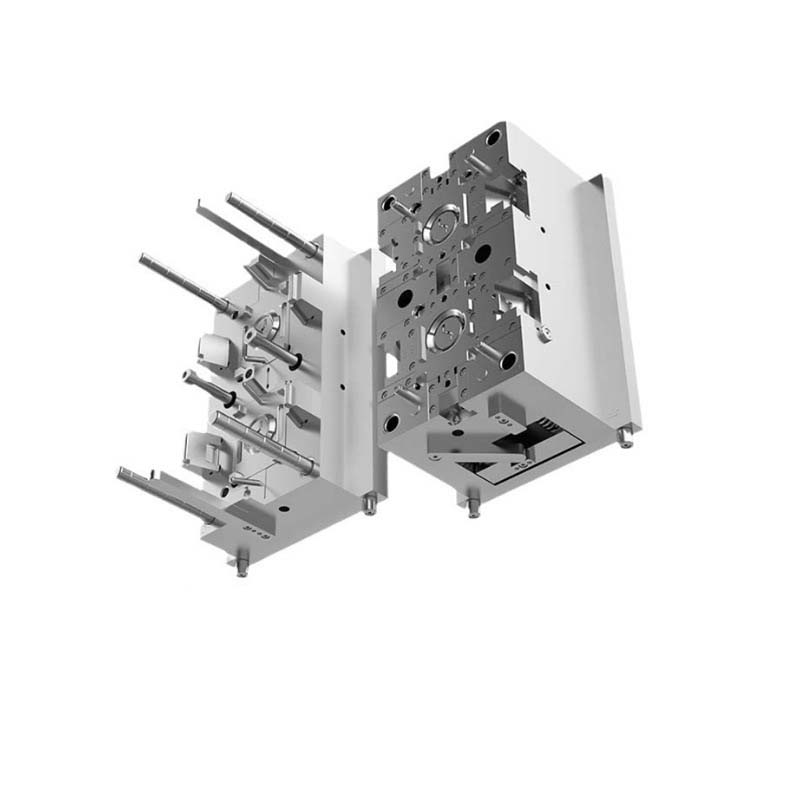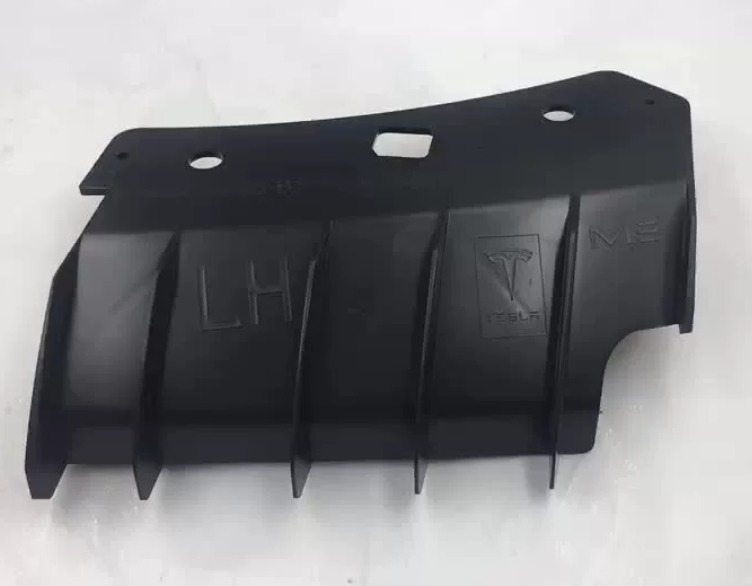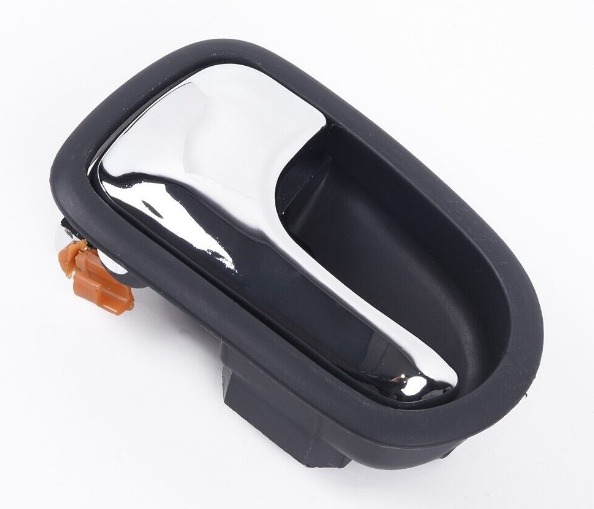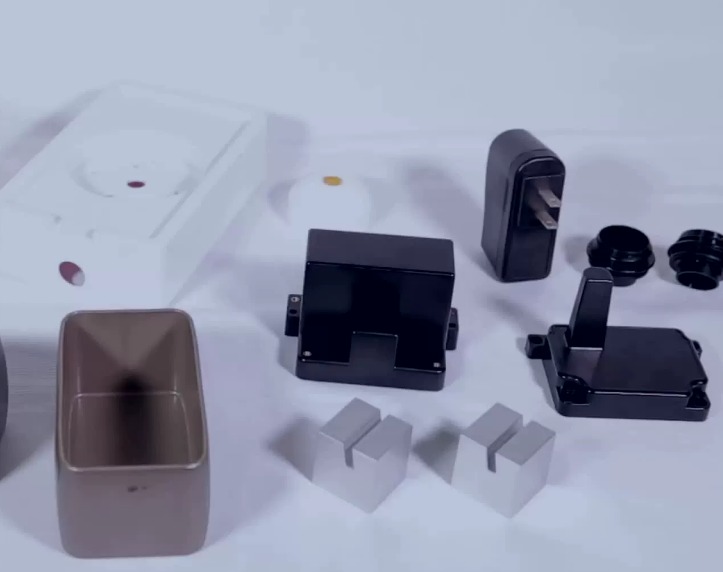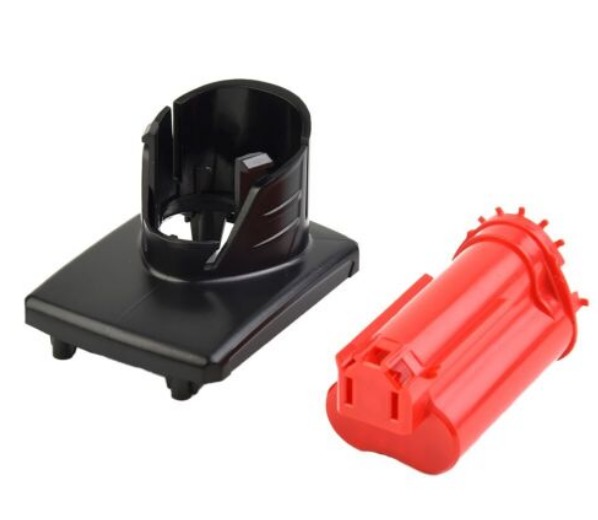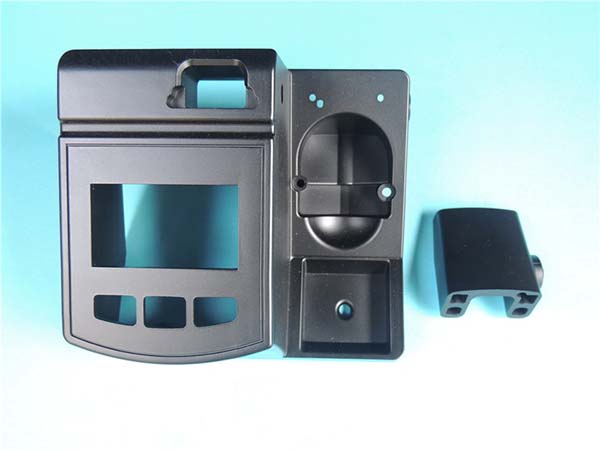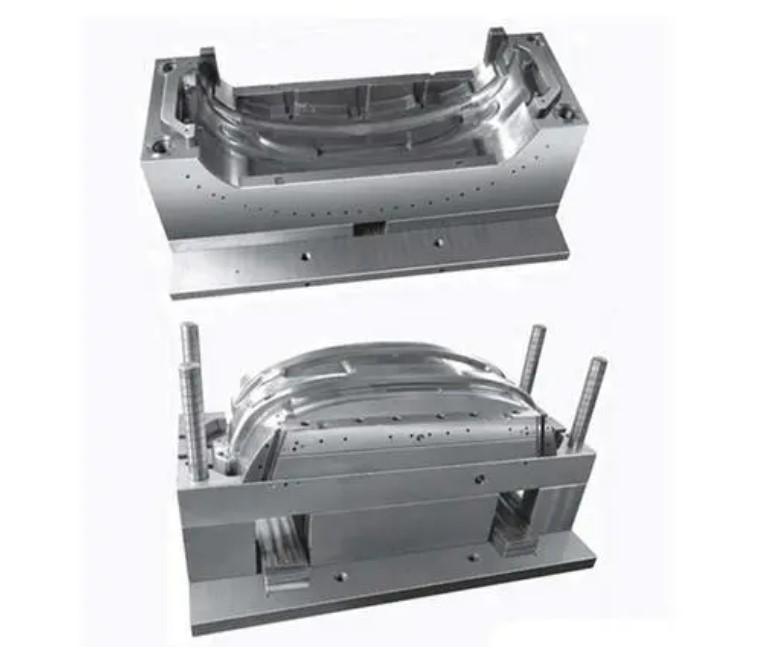1. The Basics of Injection Molding
1.1 The Process
Injection molding is a highly efficient and widely used manufacturing process for producing plastic parts. It involves several key steps that work in harmony to create high - quality plastic products.
Step 1: Raw Material Preparation
The process begins with the selection of appropriate plastic raw materials. These are typically in the form of pellets or granules. Different types of plastics, such as polyethylene (PE), polypropylene (PP), acrylonitrile - butadiene - styrene (ABS), and polycarbonate (PC), have distinct properties and are chosen based on the requirements of the final product. For Yigu Technology example, if a product needs to be highly impact - resistant, ABS or PC might be preferred.
Before being used, the raw materials may need to be dried. Some plastics, like nylon, are hygroscopic and can absorb moisture from the air. Moisture in the plastic can cause defects such as bubbles and surface imperfections in the final product. Drying is usually done in a hopper dryer, where the plastic pellets are heated to a specific temperature for a set period. For instance, nylon may be dried at around 80 - 100°C for 2 - 4 hours.
Step 2: Heating and Melting
The dried plastic pellets are then fed into the hopper of the injection molding machine and from there, they enter the barrel. Inside the barrel, the plastic is heated by electric heaters wrapped around the barrel. The temperature is carefully controlled to ensure that the plastic reaches its melting point. For Yigu Technology example, the melting point of PE is around 120 - 160°C, while that of PC is approximately 220 - 240°C.
As the plastic moves along the barrel, it is also mechanically agitated by a rotating screw. The screw plays a crucial role in this stage. It not only conveys the plastic forward but also compresses and mixes it. The combination of heat and mechanical shear forces from the screw helps to evenly melt the plastic, creating a homogeneous and viscous molten mass.
Step 3: Injection
Once the plastic is fully melted and in a suitable molten state, the injection phase begins. The rotating screw stops rotating and starts to move forward, acting as a piston. This forward movement of the screw exerts high pressure on the molten plastic. The pressure can range from 50 - 200 MPa, depending on factors such as the type of plastic, the complexity of the mold, and the size of the product.
The high - pressure molten plastic is then forced through a nozzle and into the mold cavity. The mold cavity is designed to have the exact shape of the final product. The injection speed is also an important parameter. A faster injection speed can help to fill the mold quickly, reducing cycle time, but it may also cause issues such as air entrapment or jetting if not properly controlled.
Step 4: Cooling and Solidification
After the mold cavity is filled with the molten plastic, the cooling process starts. The mold is usually equipped with a cooling system, which can be a network of channels through which a cooling medium, such as water or a coolant, flows. The cooling medium absorbs the heat from the molten plastic, causing it to cool and solidify.
The cooling time is a critical factor in the injection molding process. It depends on various factors, including the thickness of the product, the type of plastic, and the cooling efficiency of the mold. Thicker - walled products generally require longer cooling times. For Yigu Technology example, a thin - walled plastic cup may have a cooling time of a few seconds, while a thick - walled automotive component could take several minutes to cool and solidify properly. During the cooling process, the plastic shrinks as it solidifies. This shrinkage needs to be accounted for in the mold design to ensure that the final product has the correct dimensions.
Step 5: Ejection
Once the plastic has cooled and solidified enough to maintain its shape, the mold opens. Ejection pins, which are located in the mold, then push the finished plastic part out of the mold cavity. The ejection force needs to be carefully controlled. If it is too high, it can damage the product, causing cracks or deformations. On the other hand, if the ejection force is too low, the product may not be ejected properly and could get stuck in the mold.
3. The Advantages of Injection Molding
3.1 High - Precision Manufacturing
Injection molding is renowned for its ability to achieve high - precision manufacturing, making it the go - to choice for industries with stringent tolerance requirements. In the medical device industry, for example, components such as syringes, catheter connectors, and microfluidic chips demand extremely tight tolerances. Syringes need to have precise barrel diameters and plunger fits to ensure accurate dosing of medications. The precision of injection molding allows for the production of syringe components with dimensional tolerances as low as ±0.01mm.
In the electronics industry, connectors, housings for small electronic devices like smartphones and wearables, and components for integrated circuits also rely on high - precision manufacturing. For instance, the connectors in a smartphone need to be manufactured with such precision that they can ensure a secure and reliable electrical connection. Injection molding can produce these connectors with a high degree of accuracy, maintaining tight tolerances on pin positions and overall dimensions.
The high - precision capabilities of injection molding are made possible by several factors. Advanced injection molding machines are equipped with highly accurate control systems. These systems can precisely regulate parameters such as injection pressure, temperature, and screw speed. For Yigu Technology example, modern servo - driven injection molding machines can control injection pressure with an accuracy of ±1 bar, ensuring consistent and accurate filling of the mold cavity.
Precision molds also play a crucial role. High - quality molds are made from premium materials and are machined using advanced techniques such as electrical discharge machining (EDM) and high - speed milling. These molds can have cavity tolerances in the range of ±0.001 - ±0.005mm, allowing for the production of parts with extremely tight dimensional tolerances.
To further illustrate the high - precision capabilities of injection molding, consider the following comparison. In traditional machining processes like milling or turning, achieving tolerances below ±0.05mm can be challenging and time - consuming, often requiring multiple operations and highly skilled operators. In contrast, injection molding can routinely achieve tolerances of ±0.01 - ±0.03mm in a single operation, making it a far more efficient and cost - effective solution for high - precision manufacturing.
3.2 High - Volume Production
Injection molding is an ideal manufacturing process for high - volume production, offering several key advantages that contribute to its efficiency and cost - effectiveness.
One of the primary reasons injection molding is well - suited for high - volume production is its short cycle time. The entire injection molding process, from filling the mold cavity with molten plastic to ejecting the finished part, can be completed in a relatively short period. For simple plastic parts, cycle times can be as short as 5 - 10 seconds. Even for more complex parts, cycle times are typically in the range of 30 - 60 seconds. This quick cycle time allows for a high output rate. For example, a single injection molding machine can produce thousands of parts per day, depending on the part size and complexity.
The high degree of automation in injection molding also significantly contributes to its high - volume production capabilities. Modern injection molding machines are equipped with advanced control systems that can automate various aspects of the production process, including material feeding, injection, cooling, and part ejection. Automated robotic arms can be integrated with the injection molding machine to remove the finished parts from the mold and place them on a conveyor belt for further processing or packaging. This automation reduces the need for manual labor, increases production speed, and improves product quality consistency.
In addition, injection molding allows for the use of multi - cavity molds. These molds have multiple cavities, each of which can produce a complete part in a single cycle. For Yigu Technology example, a 16 - cavity mold can produce 16 identical parts in one injection cycle. This effectively multiplies the production output of the injection molding machine, making it possible to produce large quantities of parts in a short time.
To put the high - volume production capabilities of injection molding into perspective, consider the production of plastic bottle caps. A large - scale injection molding facility can produce millions of bottle caps per day. Using high - speed injection molding machines with multi - cavity molds and automated material handling and part - ejection systems, these facilities can meet the high - volume demands of the beverage industry efficiently and cost - effectively.
The following Yigu Technology table compares the production efficiency of injection molding with other manufacturing processes for high - volume production:
| Manufacturing Process | Cycle Time (for simple parts) | Output per Day (approximate) | Automation Level |
| Injection Molding | 5 - 10 seconds | Thousands - millions (depending on machine and mold) | High |
| Blow Molding | 15 - 30 seconds | Hundreds - thousands | Moderate |
| Thermoforming | 20 - 60 seconds | Hundreds - thousands | Moderate |
As shown in the table, injection molding has a distinct advantage in terms of cycle time and output, making it the preferred choice for high - volume production of plastic parts.
3.3 Material and Design Flexibility
Injection molding offers remarkable material and design flexibility, making it a versatile manufacturing process for a wide range of applications.
There is a vast array of plastic materials that can be used in injection molding, each with its own unique set of properties. Some of the most commonly used materials include:
- Polyethylene (PE): This is a widely used thermoplastic with excellent chemical resistance, low density, and good electrical insulation properties. Low - density polyethylene (LDPE) is often used for products such as plastic bags, films, and flexible containers due to its flexibility and transparency. High - density polyethylene (HDPE) is more rigid and is used for applications like bottles, pipes, and storage containers.
- Polypropylene (PP): PP is a lightweight plastic with good heat resistance, high strength - to - weight ratio, and excellent chemical resistance. It is commonly used in applications such as automotive parts, household appliances, and food containers. For example, the interior components of cars, like dashboard trims and door panels, are often made of PP due to its durability and ability to be molded into complex shapes.
- Acrylonitrile - Butadiene - Styrene (ABS): ABS is a tough and rigid plastic with good impact resistance, dimensional stability, and surface finish. It is widely used in the electronics industry for manufacturing product housings, such as those for televisions, computers, and game consoles. Its ability to be easily colored and textured also makes it a popular choice for consumer products.
- Polycarbonate (PC): PC is a high - performance plastic with excellent impact resistance, transparency, and heat resistance. It is used in applications where high strength and optical clarity are required, such as in eyewear lenses, safety helmets, and automotive lighting components.
In addition to these common materials, there are also engineering plastics, such as polyamide (PA, commonly known as nylon), polyoxymethylene (POM), and polyetheretherketone (PEEK), which offer even more specialized properties. For Yigu Technology example, PEEK is a high - temperature - resistant plastic with excellent mechanical properties, making it suitable for applications in the aerospace and medical industries, such as manufacturing aircraft components and artificial joints.
Injection molding also allows for the creation of complex designs. The process can produce parts with intricate geometries, including undercuts, thin walls, and internal cavities. For example, a plastic toy with a hollow interior and multiple moving parts can be easily manufactured using injection molding. The use of slides, lifters, and other mold - actuated mechanisms in the mold design enables the creation of these complex features.
Consider the design of a smartphone case. Injection molding can produce a case with precise cutouts for buttons, ports, and cameras, as well as a sleek and ergonomic shape. The case can also have features such as anti - slip textures and built - in stands, all of which can be achieved through the flexibility of the injection molding process.
Another example is the production of a multi - component plastic assembly. Injection molding can be used to create individual parts that can be easily assembled into a complete product. This allows for the use of different materials for different components based on their specific functional requirements. For instance, a power tool housing may be made of a strong and impact - resistant plastic like ABS, while the grip area is made of a soft - touch thermoplastic elastomer (TPE) for better user comfort and grip.
4. Applications of Injection Molding in Different Industries
4.1 Automotive Industry
In the automotive industry, injection molding has become an indispensable manufacturing process, playing a pivotal role in the production of a wide range of components.
Interior Components
- Dashboard: The dashboard is a prominent interior component that is typically manufactured using injection molding. It requires a combination of aesthetics, functionality, and durability. Materials such as polypropylene (PP) are commonly used. PP offers good heat resistance, which is crucial as the dashboard is exposed to heat from the engine and sunlight. It also has a high strength - to - weight ratio, contributing to the overall lightweight design of the vehicle. Injection molding allows for the creation of complex shapes, enabling the integration of features such as instrument clusters, air vents, and storage compartments into a single, seamless unit.
- Door Panels: Door panels are another area where injection molding shines. They need to be lightweight yet strong enough to withstand normal usage and potential impacts. Materials like acrylonitrile - butadiene - styrene (ABS) are often employed. ABS has excellent impact resistance, ensuring the door panels can endure accidental knocks. Injection molding enables the production of door panels with integrated armrests, cup holders, and speaker mounts, reducing the need for multiple assembly steps and improving the overall structural integrity.
Exterior Components
- Bumpers: Bumpers are essential for protecting the vehicle in case of collisions. They are usually made from materials like thermoplastic olefins (TPOs). TPOs offer a good balance of flexibility and strength, allowing the bumper to absorb impact energy without shattering. Injection molding allows for the production of bumpers with complex geometries, including curves and contours that match the vehicle's design. Additionally, the surface finish of the bumper can be precisely controlled through injection molding, providing a smooth and aesthetically pleasing appearance.
- Grilles: Grilles not only enhance the vehicle's appearance but also play a functional role in allowing air to flow into the engine compartment. They are often made from materials such as polycarbonate (PC) or ABS. PC offers high optical clarity, which is beneficial if the grille has a see - through design. Injection molding enables the creation of intricate grille patterns, adding to the vehicle's visual appeal.
Engine and Mechanical Components
- Air Intake Manifolds: Air intake manifolds are critical for delivering air to the engine. They are typically made from nylon - based materials due to their high heat resistance and mechanical strength. Injection molding allows for the production of manifolds with complex internal channels, ensuring efficient air flow distribution to the engine cylinders. This results in improved engine performance and fuel efficiency.
- Cooling Fans: Cooling fans are used to dissipate heat from the engine. They are made from materials like ABS or PP, which can withstand the high - speed rotation and heat generated by the engine. Injection molding enables the production of fan blades with precise aerodynamic shapes, maximizing the fan's cooling efficiency.
The use of injection molding in the automotive industry has significantly contributed to the development of the industry. It has allowed for the production of lighter - weight vehicles, which in turn improves fuel efficiency and reduces emissions. The ability to create complex geometries has also led to more innovative and functional automotive designs. For example, the integration of multiple components into a single injection - molded part reduces the number of parts in a vehicle, simplifying the assembly process and potentially reducing costs.
4.2 Consumer Electronics
In the fast - paced world of consumer electronics, injection molding is a fundamental manufacturing process that enables the production of a wide range of components with high precision and aesthetic appeal.
Smartphone Components
- Housings: Smartphone housings are a prime example of injection - molded components. They need to be lightweight, durable, and have an attractive appearance. Materials such as polycarbonate (PC) and acrylonitrile - butadiene - styrene (ABS) are commonly used. PC offers excellent impact resistance, protecting the internal components of the smartphone from drops and impacts. ABS, on the other hand, provides good dimensional stability and surface finish, allowing for a sleek and smooth appearance. Injection molding allows for the production of housings with precise cutouts for buttons, ports, and cameras, as well as complex shapes that fit comfortably in the hand.
- Battery Covers: Battery covers are also typically injection - molded. They need to be thin yet strong enough to protect the battery. Materials like polypropylene (PP) are often used due to their low cost and good chemical resistance. Injection molding enables the production of battery covers with a perfect fit, ensuring a secure seal around the battery.
Computer Components
- Laptop Housings: Laptop housings are another area where injection molding is widely used. They need to be lightweight for portability and durable enough to withstand regular use. Materials such as aluminum - filled plastics or high - strength engineering plastics are often employed. Injection molding allows for the production of laptop housings with a slim profile, integrated hinges, and precise cutouts for ports and components.
- Keyboard Keys: Keyboard keys are small but essential components in computers. They are usually made from materials like silicone or ABS. Silicone keys offer a soft and tactile feel, while ABS keys provide a more rigid and durable option. Injection molding enables the production of keyboard keys with consistent shapes and sizes, ensuring a uniform typing experience.
Audio Equipment Components
- Speaker Enclosures: Speaker enclosures are designed to enhance the sound quality of audio equipment. They are often made from materials such as MDF (medium - density fiberboard) or injection - molded plastics. Injection - molded plastic speaker enclosures offer several advantages, including lightweight construction, good acoustic properties, and the ability to be molded into various shapes. Materials like ABS or polycarbonate can be used to create enclosures that are both durable and aesthetically pleasing.
- Headphone Parts: Headphone parts, such as ear cups and headbands, are also commonly injection - molded. They need to be comfortable to wear and durable enough to withstand regular use. Materials like soft - touch plastics for ear cups and strong engineering plastics for headbands are used. Injection molding allows for the production of headphone parts with ergonomic designs, ensuring a comfortable fit for the user.
Injection molding in the consumer electronics industry allows for the production of components that meet the high - performance and aesthetic requirements of modern devices. The ability to achieve high - precision manufacturing ensures that components fit together perfectly, reducing the risk of mechanical failures. The wide range of available materials also allows manufacturers to select the most suitable material for each component, based on factors such as cost, performance, and appearance.
Conclusion
Yigu Technology Injection molding truly stands as the beating heart of plastic manufacturing, and its significance cannot be overstated. From the basic understanding of the injection molding process, which involves precise steps of raw material preparation, heating, injection, cooling, and ejection, to the essential components of injection molding machines like the screw, barrel, and nozzle, every aspect plays a crucial role in ensuring the production of high - quality plastic parts.
The numerous advantages of injection molding, such as high - precision manufacturing, high - volume production, and remarkable material and design flexibility, make it an unrivaled choice for a wide range of industries. The ability to achieve tight tolerances in high - precision manufacturing, short cycle times in high - volume production, and the use of a diverse array of materials and creation of complex designs in material and design flexibility have revolutionized the manufacturing landscape.
In different industries, injection molding has left an indelible mark. In the automotive industry, it has enabled the production of lightweight yet durable interior and exterior components, as well as critical engine and mechanical parts, contributing to improved fuel efficiency and innovative designs. In the consumer electronics industry, injection - molded components meet the high - performance and aesthetic requirements of modern devices, ensuring perfect fits and reliable functionality. In the medical device industry, injection molding is essential for producing hygienic, precise, and biocompatible products that are crucial for accurate diagnoses and effective treatments.
Injection molding is not just a manufacturing process; it is the driving force behind the development and innovation of countless products across multiple industries. Its continuous evolution and improvement will undoubtedly lead to even more remarkable advancements in the future, further solidifying its position as the cornerstone of plastic manufacturing.
FAQ
- Q: What are the most common plastic materials used in injection molding?
- A: The most common plastic materials include polyethylene (PE), polypropylene (PP), acrylonitrile - butadiene - styrene (ABS), and polycarbonate (PC). PE is used for items like plastic bags and containers, PP for automotive and household appliance parts, ABS in electronics product housings, and PC in applications requiring high impact - resistance and transparency such as eyewear lenses.
- Q: How does injection molding achieve high - precision manufacturing?
- A: Injection molding achieves high - precision manufacturing through advanced injection molding machines with accurate control systems that can precisely regulate parameters like injection pressure, temperature, and screw speed. Precision molds, made from premium materials and machined using techniques like EDM and high - speed milling, also play a crucial role, with cavity tolerances as low as ±0.001 - ±0.005mm.
- Q: Why is injection molding suitable for high - volume production?
- A: Injection molding is suitable for high - volume production due to its short cycle times (as short as 5 - 10 seconds for simple parts), high degree of automation which reduces manual labor and improves production speed and quality consistency, and the ability to use multi - cavity molds that can produce multiple parts in a single cycle.
